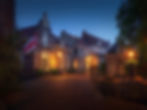The Xperia 1 V is Amazing in Low Light!
- Albert Dros
- Jun 24, 2023
- 7 min read
Sony recently released the Xperia 1 V smartphone and marketed it as a big upgrade regarding photography. I’ve been using Xperia smartphones since forever so I was curious as to what Sony did this time. The Xperia phones have been known as kind of ‘niche’ smartphones but they have always been praised for their innovative functions and hardware. If you didn’t know: Sony is leading by producing most smartphone sensors in the industry (they are used in many other brand’s smartphones).
This article will be mainly about the low light performance of the new Xperia 1 V in the real world.
Full Disclaimer: I am a Sony Alpha Ambassador and I received this (and many others in the past) smartphone from Sony to test. I was also in the launch video for the Sony Xperia I III

It’s been a while since I’ve written an article about a Sony Xperia smartphone, but the time felt right again because of the newly upgraded tech regarding photography. After having used many Sony smartphones, ever since the Xperia 1 and the PRO-I I felt like Sony’s got it ‘right’ in the photography department. The smartphones are taking great photos and I’ve shot my fair share of photos that I’d like to call ‘decent :)’ with the Xperia phones
Some older Xperia 1 Photos. All were shot with Xperia 1-x and Pro-I models.
But in my opinion, they have never been great in low light. Not bad, but not great either. Low light is always difficult for smartphones, as smartphone sensors are super small. And that makes them rely much more on AI technologies to stack images, clean them up and come up with a nice result. This all happens under the hood. According to Sony, the Xperia 1 V is great in low light. It has a ‘new generation Exmor T’ sensor. It's the world's first stacked CMOS sensor with 2-layer transistor pixel technology. Here’s a quote from Sony’s own website:
“The new Exmor T for mobile image sensor has an innovative 2-Layer Transistor Pixel – one for the photodiode and one for the phototransistor – enabling it to capture more light and significantly reduce image noise.”

NUMBERS
The Xperia 1 V has a multi-aspect 1/1.35" imager with 52MP resolution (48MP effective), 1.12µm pixels, and it sits behind stabilized (OIS) 24mm f/1.9 lens. Note that the output is 12MP files. That’s a lot of numbers, but the sensor is basically almost 2 times bigger than the Xperia 1 IV with new technologies included, meaning it can collect much more light and be less noisy at higher ISO
It’s important to note that this only works when using the primary 24mm equivalent (the middle one) camera. However (spoiler alert) I found that the other lenses with in particular the wide lens also performed rather well with the phone’s AI technology to take photos at night. So yes, the phone has 3 lenses: The standard 24mm f/1.9 lens (with the new sensor), the 16mm f/2.2 wide angle lens and the 85-125mm zoom lens. To summarise: ONLY the main lens has all this new low light tech.

TESTING
Obviously I was curious how this would perform. And let me tell you how I usually photograph with a smartphone: I hold it in my hand and press the button! This may sound like a joke, but this is how most people take photos with their smartphone. They quickly take it out of their pocket and photograph with it. Now keep in mind that the Xperia 1 V is really a PRO smartphone, meaning it has a lot of functionality that my Sony Alpha cameras also have and it’s aimed at both normal users and professionals that want all the functionality to get the best results. I can completely set it up manually, dial in all the settings, and use it on a tripod to possibly get the best image quality.
I say ‘possibly’, because in reality I almost never use my phone like that. I use my Sony Alpha cameras in this way, but with my smartphone I usually just want to take a photo quickly.
So even though the Xperia 1 V offers all of these pro functionalities, I will treat this phone how most people will use them for photography: Simply use it in Basic mode and take photos with it. Also, this phone has RAW functionality. On my Sony Alpha cameras I always photograph in RAW, but on smartphones I often do not. Why you ask? The difference between editing flexibility compared to the JPGs is really minimal because of the super small sensors. The dynamic range collection in the RAW files is simply not so much different than what you can do with the JPG. And also, I simply like how the JPG files are already coming out of the smartphone! That’s actually the main reason. The Xperia 1 V does some great image processing to the files and they often come out very nice.
So for testing, I simply went out to some nearby villages and tried it out! No complicated functions, no RAW, just walk the streets and take photos. It’s time to show you some results:
RESULTS
All of the images below were shot with the 24mm lens.

This is one of the first evening shots I took with the Xperia 1 V. It was already getting dark here and the street lights just turned on. And as you can see the moon was shining in the sky. I was already surprised how balanced the photo turned out. What’s actually nice is that the phone made the sky which was still not that dark at the time, actually made the sky slightly more dark and blue to already give that blue hour feel to the photo. If we look at the EXIF it was shot at ISO 200. The base ISO is 25, so that’s already much higher. But we don’t see any noise or whatsoever.

Continuing my walk through the picturesque streets of Amersfoort (my hometown by the way), it was getting darker. The right shot was taken at ISO250 and the left at ISO400. It was getting darker and the phone started to use a higher ISO. But still, no sign of noise at all and the exposure balance in the shots is great. Honestly, seeing this results I was already ‘wowed’ that this smartphone could shoot such nice blue hour shots.

Continuing my way, still getting darker with this shot taken at ISO 640. It’s important to note that when the smartphone takes a photo, you have to keep it still and it displays a ‘waiting’ circle for a few seconds. I don’t think it’s actually taking a longer exposure, but more like taking a number of exposures, overlay them, and stack them to get a cleaner result. The darker it is, the longer this takes. This technology was already in the previous Xperia phones, but seems to work even better now. This is also why the exif date doesn’t actually show multiple seconds exposure. It shows just 1/15s most of the time.

Here it was even getting darker. You can see the same building as in a previous photo from the other side. I was simply walking back here. This shot was taken at ISO800. Not noisy, not mushy. At this time the light started to become ‘ugly’ and I called it for this shoot. Next, I went to Zutphen, a picturesque town in the Netherlands.
Here are some (end of the) daytime shots with pretty windows to get a general mood of the town. Shot with the Xperia 1 V of course. Let’s continue to the evening.

Here the sun was setting. The ISO already upped to 80 on this shot. I really liked this spot with the little gate and the pretty roses so I marked it to come back in the evening.

I found this street nearby with pretty flowers as well. Here it was already getting dark. Actually already shooting at ISO 800 because of the darkness of the streets. The lights just turned on here. Notice the nice balanced exposure here.
I kept walking the streets and checked off some spots that I scouted when it was still light: A street with the church tower and a very interesting street with a lot of arches. Can you believe this is the Netherlands? Again, both shots done at ISO 800. I know i’ve said it before, but the shots were all hand-held, no complicated settings (Basic Mode), just pressing the bottom.


And to close the session I went to this spot where I shot my sunset photo earlier. Again, both shots at ISO800. After that the contrast between darkness and lights became strong. I usually shoot until the end of the blue hour (about an hour after sunset) and then stop, as I enjoy the blue hour mood the most.
That does not mean that the phone doesn’t shoot at a higher ISO. It can go much higher and produce good results. But I have mostly been using it in cities with lots of street lights so the ISO of the camera in the smartphone didn’t push that high.

Here’s a shot taken with the wide angle lens that also came out really well. It’s a little bit more mushy because it was not taken with the main 24mm lens, but still has plenty of detail and looks good. That proves you don’t always need to use the 24mm lens in the evening, but it does help for better results.
EDITING
Something to note here is that I did some editing myself in most of these shots. The Xperia shots often come out great, but I like to add my touch and style. Actually, while I love saturation, the blue hour and night shots often come out slightly too blue and I reduce the saturation of the sky. If you are interested in how I edit my photos, I have a full course available for that on www.edityourlandscapes.com , which is teaching you how to get the most out of your files and how to edit your Landscape / Cityscape shots. The course is for both beginner and advanced users and already has many happy students :)
CLOSING

Viewing content on the Xperia 1 V is a joy with the 4K OLED 21:9 screen
And with that It’s time to close this article. I feel that the Xperia 1 V is the best smartphone Sony released so far in terms of photography. The new sensor is not just good tech on paper, it really makes the photos better especially at at low light.
Yeah, it does have a lot of other nice functions next to the photos: powerful processor (Snapdragon 8 Gen 2 chipset), 120hz 4K OLED 21:9 screen, S-Cinetone for video, great for gaming and many more, but that’s not what this article is about :) . You can read all about that on the plenty of tech websites that reviewed this smartphone.
I’m happy to see Sony is still pushing the Xperia smartphones and coming up with great improvement. As a Sony user (and long time ambassador), I’m always excited for the future and I can’t wait what’s coming up next.
Thank you all so much for reading! For any questions, please ask! If you like these Articles and want to get notified on new ones, please subscribe to my newsletter.
Albert
Gear used in this article:
Sony A7RV (for behind-the-scenes shots)













































